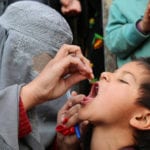 Weird Stuff
Weird Stuff  Weird Stuff
Weird Stuff  Crime
Crime The 10 Most Infamous Gangs in History
 Miscellaneous
Miscellaneous Ten Groundbreaking Tattoos with Fascinating Backstories
 Our World
Our World 10 Green Practices That Actually Make a Difference
 Humans
Humans Ten Historic Men Who Deserve Way More Credit Than They Got
 Movies and TV
Movies and TV The 10 Most Heartwarming Moments in Pixar Films
 Travel
Travel Top 10 Religious Architectural Marvels
 Creepy
Creepy 10 Haunted Places in Alabama
 History
History Top 10 Tragic Facts about England’s 9 Days Queen
 Food
Food 10 Weird Foods Inspired by Your Favorite Movies
 Weird Stuff
Weird Stuff The 10 Weirdest Materials That Can Be Used to Make Paper
 Crime
Crime The 10 Most Infamous Gangs in History
 Miscellaneous
Miscellaneous Ten Groundbreaking Tattoos with Fascinating Backstories
Who's Behind Listverse?

Jamie Frater
Head Editor
Jamie founded Listverse due to an insatiable desire to share fascinating, obscure, and bizarre facts. He has been a guest speaker on numerous national radio and television stations and is a five time published author.
More About Us Our World
Our World 10 Green Practices That Actually Make a Difference
 Humans
Humans Ten Historic Men Who Deserve Way More Credit Than They Got
 Movies and TV
Movies and TV The 10 Most Heartwarming Moments in Pixar Films
 Travel
Travel Top 10 Religious Architectural Marvels
 Creepy
Creepy 10 Haunted Places in Alabama
 History
History Top 10 Tragic Facts about England’s 9 Days Queen
 Food
Food 10 Weird Foods Inspired by Your Favorite Movies
Top 10 Worst Diseases
One of the worst ways for the human population to be thinned is to die from disease. Millions of people each year have perished as a result of one of any number of seemingly unstoppable diseases. Throughout history mankind has suffered the crippling and mortal effects of a ravaging disease brought on by any number of target factors ranging from animals to one single human host. Here are but ten, in no particular order, that have decimated humankind since the earliest recordings.
10. The Black Death 75 million Deaths
The Black Death, or The Black Plague, was one of the most deadly pandemics in human history. It probably began in Central Asia and spread to Europe by the late 1340s. The total number of deaths worldwide from the pandemic is estimated at 75 million people; there were an estimated 20 to 30 million deaths in Europe alone. The Black Death is estimated to have killed between one-third and two-thirds of Europe’s population. [Wikipedia]
Discover the bizarre ways Western culture was shaped by one of the worst disasters in mankind’s history. Buy The Black Death and the Transformation of the West at Amazon.com!
9. Polio 10,000 Deaths since 1916
Poliomyelitis, often called polio or infantile paralysis, is an acute viral infectious disease spread from person to person, primarily via the fecal-oral route. The term derives from the Greek polio (??????), meaning “grey”, myelon (µ?????), “spinal cord”, and -itis, which denotes inflammation. Although roughly 90% of polio infections are asymptomatic, affected individuals can exhibit a range of symptoms if the virus enters the blood stream. In less than 1% of polio cases the virus enters the central nervous system, preferentially infecting and destroying motor neurons, leading to muscle weakness and acute flaccid paralysis. [Wikipedia]
8. Smallpox Native Americans suffer a population drop from 12 Mil. to 235,000
Smallpox (also known by the Latin names Variola or Variola vera) is a contagious disease unique to humans. Smallpox is caused by either of two virus variants named Variola major and Variola minor. The deadlier form, V. major, has a mortality rate of 30–35%, while V. minor causes a milder form of disease called alastrim and kills ~1% of its victims. Long-term side-effects for survivors include the characteristic skin scars. Occasional side effects include blindness due to corneal ulcerations and infertility in male survivors. Smallpox killed an estimated 60 million Europeans, including five reigning European monarchs, in the 18th century alone. Up to 30% of those infected, including 80% of the children under 5 years of age, died from the disease, and one third of the survivors became blind. To this day, smallpox is the only human infectious disease to have been completely eradicated from nature. [Wikipedia]
7. Cholera 12,000 Deaths since 1991
Cholera (or Asiatic cholera or epidemic cholera) is an extreme diarrheal disease caused by the bacterium Vibrio cholerae. Transmission to humans is by ingesting contaminated water or food. The major reservoir for cholera was long assumed to be humans, but some evidence suggests that it is the aquatic environment. In its most severe forms, cholera is one of the most rapidly fatal illnesses known—a healthy person may become hypotensive within an hour of the onset of symptoms and may die within 2-3 hours if no treatment is provided. More commonly, the disease progresses from the first liquid stool to shock in 4-12 hours, with death following in 18 hours to several days without rehydration treatment. [Wikipedia]
6. Ebola 160,000 Deaths since 2000
The Ebola virus first emerged in 1976 in simultaneous outbreaks in Sudan and Zaire. It is known to be a zoonotic virus as it is currently devastating the populations of lowland gorillas in Central Africa. Despite considerable effort by the World Health Organization, no animal reservoir capable of sustaining the virus between outbreaks has been identified. However, it has been hypothesized that the most likely candidate is the fruit bat. Ebola hemorrhagic fever is potentially lethal and encompasses a range of symptoms including fever, vomiting, diarrhea, generalized pain or malaise, and sometimes internal and external bleeding. Mortality rates are generally very high, in the region of 80% – 90%, with the cause of death usually due to hypovolemic shock or organ failure. [Wikipedia]
5. Malaria 2.7 Million Deaths per year-2800 children per day
Malaria is a vector-borne infectious disease caused by protozoan parasites. It is widespread in tropical and subtropical regions, including parts of the Americas, Asia, and Africa. Each year, it causes disease in approximately 515 million people and kills between one and three million, most of them young children in Sub-Saharan Africa. Malaria is commonly associated with poverty, but is also a cause of poverty and a major hindrance to economic development. Malaria is one of the most common infectious diseases and an enormous public-health problem. The disease is caused by protozoan parasites of the genus Plasmodium. The most serious forms of the disease are caused by Plasmodium falciparum and Plasmodium vivax, but other related species can also infect humans. Although some are under development, no vaccine is currently available for malaria; preventative drugs must be taken continuously to reduce the risk of infection. [Wikipedia]
Read more about this terrifying disease in the eye-opening book The Fever: How Malaria Has Ruled Humankind for 500,000 Years at Amazon.com!
4. Bubonic Plague 250 Million Europeans Dead (1/3 population)
Bubonic plague is mainly a disease in rodents and fleas (Xenopsylla cheopsis). Infection in a human occurs when a person is bitten by a flea that has been infected by biting a rodent that itself has been infected by the bite of a flea carrying the disease. The bacteria multiply inside the flea, sticking together to form a plug that blocks its stomach and causes it to begin to starve. The flea then voraciously bites a host and continues to feed, even though it can not quell its hunger, and consequently the flea vomits blood tainted with the bacteria back into the bite wound. The bubonic plague bacterium then infects a new victim, and the flea eventually dies from starvation. Any serious outbreak of plague is usually started by other disease outbreaks in rodents, or a rise in the rodent population. [Wikipedia]
3. Spanish Flu Between 1918-19: 50-100 Million dead
The 1918 flu pandemic (commonly referred to as the Spanish flu) was a category 5 influenza pandemic caused by an unusually severe and deadly Influenza A virus strain of subtype H1N1. Many of its victims were healthy young adults, in contrast to most influenza outbreaks which predominantly affect juvenile, elderly, or otherwise weakened patients. The Spanish flu pandemic lasted from 1918 to 1919, spreading even to the Arctic and remote Pacific islands. While older estimates put the number of killed at 40–50 million people, current estimates are that 50 million to 100 million people worldwide died, possibly more than that taken by the Black Death. This extraordinary toll resulted from the extremely high infection rate of up to 50% and the extreme severity of the symptoms, suspected to be caused by cytokine storms. Between 2 and 20% of those infected by Spanish flu died, as opposed to the normal flu epidemic mortality rate of 0.1%. In some remote Inuit villages, mortality rates of nearly 100% were recorded. [Wikipedia]
2. Influenza 36,000 Deaths per year
Influenza, commonly known as flu, is an infectious disease of birds and mammals caused by RNA viruses of the family Orthomyxoviridae (the influenza viruses). In humans, common symptoms of influenza infection are fever, sore throat, muscle pains, severe headache, coughing, weakness and general discomfort. In more serious cases, influenza causes pneumonia, which can be fatal, particularly in young children and the elderly. Sometimes confused with the common cold, influenza is a much more severe disease and is caused by a different type of virus. Although nausea and vomiting can be produced, especially in children, these symptoms are more characteristic of the unrelated gastroenteritis, which is sometimes called “stomach flu” or “24-hour flu.” Typically, influenza is transmitted from infected mammals through the air by coughs or sneezes, creating aerosols containing the virus, and from infected birds through their droppings. Influenza can also be transmitted by saliva, nasal secretions, feces and blood. Infections also occur through contact with these body fluids or with contaminated surfaces. [Wikipedia]
1. AIDS 25 Million since 1981
Acquired immune deficiency syndrome or acquired immunodeficiency syndrome (AIDS or Aids) is a collection of symptoms and infections resulting from the specific damage to the immune system caused by the human immunodeficiency virus (HIV) in humans, and similar viruses in other species (SIV, FIV, etc.). The late stage of the condition leaves individuals susceptible to opportunistic infections and tumors. Although treatments for AIDS and HIV exist to decelerate the virus’ progression, there is currently no known cure. HIV, et al., are transmitted through direct contact of a mucous membrane or the bloodstream with a bodily fluid containing HIV, such as blood, semen, vaginal fluid, preseminal fluid, and breast milk. This transmission can come in the form of anal, vaginal or oral sex, blood transfusion, contaminated hypodermic needles, exchange between mother and baby during pregnancy, childbirth, or breastfeeding, or other exposure to one of the above bodily fluids. Most researchers believe that HIV originated in sub-Saharan Africa during the twentieth century; it is now a pandemic, with an estimated 38.6 million people now living with the disease worldwide. [Wikipedia]
This article is licensed under the GFDL. It uses material from the Wikipedia articles cited above.
Contributor: StewWriter








